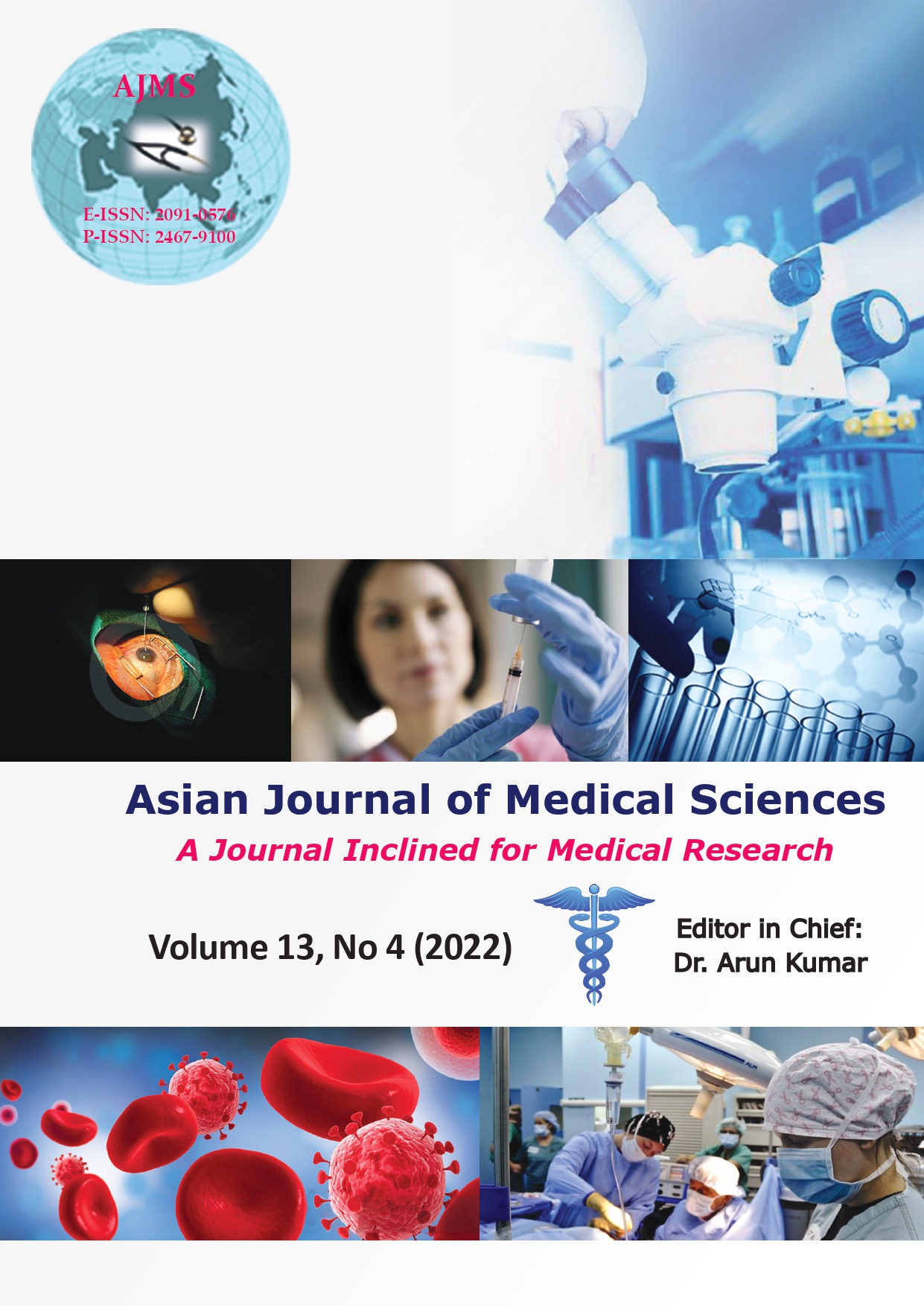Clinical assessment of laryngo-pharyngeal reflux disease by reflux symptom index and reflux finding score in a tertiary care hospital, Madhya Pradesh
Keywords:
Laryngopharyngeal reflux, Reflux finding score, Reflux symptom indexAbstract
Background: Laryngopharyngeal reflux (LPR) or LPR disease (LPRD) is a commonly diagnosed clinical entity caused by the back-flow of gastric contents into the laryngo-pharynx. Diagnosis was made by a set of non-specific clinical symptoms, endoscopic laryngeal examination signs, reflux symptom index (RSI), and reflux finding score (RFS).
Aims and Objectives: The aims and objectives of the present study were to establish the diagnosis and treatment of LPR by assessment of the RSI and RFS and also evaluate the impact of proton pump inhibitor (PPI) therapy on LPR.
Materials and Methods: A total of 60 clinically suspected patients attending the ENT outpatient department presenting LPRD signs and symptoms were enrolled in the present study. LPR symptoms were assessed using the RSI, and LPR signs were assessed by laryngoscopic examination of the larynx using the RFS. Patient having an RSI score of ≥13 and an RFS of >7 was included in the present study and it was also considered for starting LPR treatment. We have again calculated the both the score (RSI and RFS) after 3 months of successful PPI therapy and compared them with the initial scores.
Results: Out of total 60 patients, 50 (83.4%) had RSI score >13 and RFS >7 indicating severe LPRD. Most common symptoms were troublesome/annoying cough (95%), sensation of something sticking in throat (95%), heartburn(95%), frequent throat clearing (91%), and excess throat mucous (87.9%), whereas the most common sign noted on laryngoscopic examination were arytenoids erythema (86.66%), partial ventricular obliteration (83.33%), vocal cord edema (56.7%), posterior commissure hypertrophy (51.7%), and diffuse laryngeal edema (50%). Majority of the patients significantly responded on 3 months PPI therapy. Reduction of clinical signs, symptoms of LPR and also observed significant reduction of RSI and RFS score after successful PPI therapy.
Conclusions: In the present study, most of the patients suffering from severe LPRD who presented in our hospital RSI and RFS scored that were clinically significant in current study. After 3 months of proton-pump inhibitor therapy, there was a significant reduction in clinical signs and symptoms of LPR as well as RSI/RFS scores, indicating that PPI therapy was the mainstay of LPRD treatment in the current era.
Downloads
Downloads
Published
How to Cite
Issue
Section
License
Copyright (c) 2022 Asian Journal of Medical Sciences

This work is licensed under a Creative Commons Attribution-NonCommercial 4.0 International License.
Authors who publish with this journal agree to the following terms:
- The journal holds copyright and publishes the work under a Creative Commons CC-BY-NC license that permits use, distribution and reprduction in any medium, provided the original work is properly cited and is not used for commercial purposes. The journal should be recognised as the original publisher of this work.
- Authors are able to enter into separate, additional contractual arrangements for the non-exclusive distribution of the journal's published version of the work (e.g., post it to an institutional repository or publish it in a book), with an acknowledgement of its initial publication in this journal.
- Authors are permitted and encouraged to post their work online (e.g., in institutional repositories or on their website) prior to and during the submission process, as it can lead to productive exchanges, as well as earlier and greater citation of published work (See The Effect of Open Access).




